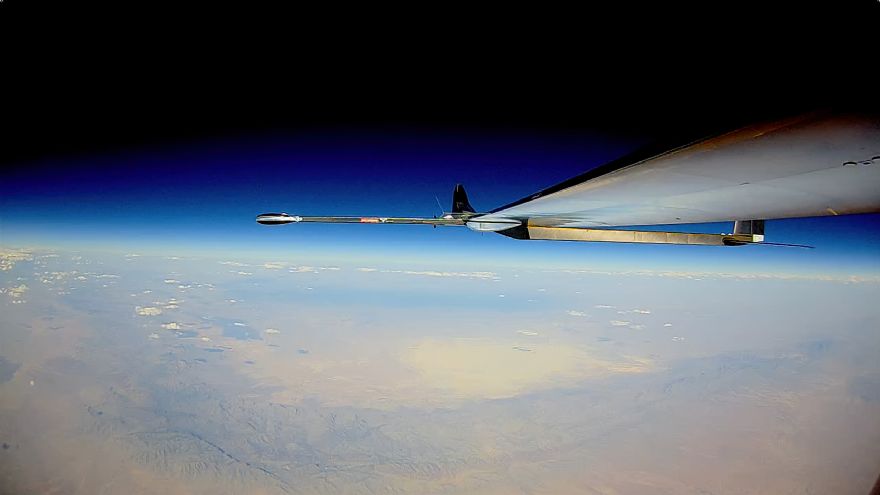
British engineers have successfully completed a stratospheric flight trial of
BAE Systems’ High Altitude Pseudo Satellite (HAPS) Uncrewed Aerial System (UAS) — PHASA-35. Over a 24hr period, PHASA-35 soared to more than 66,000ft, reaching the stratosphere, before successfully landing. The trial, completed last month in New Mexico in the USA, allowed engineers to assess the performance of the experimental solar-electric drone within the outer-reaches of the planet’s atmosphere.
The flight marks a significant milestone in PHASA-35’s development which began in 2018. Designed by BAE Systems’ subsidiary
Prismatic Ltd to operate above the weather and conventional air traffic, it has the potential to provide a persistent and stable platform for various uses including ultra-long endurance intelligence, surveillance and reconnaissance, as well as security. It also has the potential to be used in the delivery of communications networks including 4G and 5G and could be used in a wide range of applications, such as disaster relief and border protection, as an alternative to traditional airborne and satellite systems.
The PHASA-35 programme sits within FalconWorks, a new centre for advanced and agile research and development within BAE Systems’ Air sector, designed to deliver a range of cutting-edge combat air capabilities to the UK and its allies. PHASA-35, which has a 35m wingspan and carries a 15kg payload, uses a range of world-leading technologies including advanced composites, energy management, solar electric cells and photo-voltaic arrays to provide energy during the day which is stored in rechargeable cells to maintain flight overnight.
The successful trial assessed the performance of the experimental system across a range of areas. It is the first in a series of trials planned to confirm system performance, support development activities and validate test points to enable PHASA-35 to be made available in defence and commercial markets internationally.
Dave Corfield, CEO of Prismatic Ltd, said: “This is a fantastic achievement for everyone involved and shows the commitment of BAE Systems to invest in new technologies and markets. PHASA-35’s first stratospheric flight demonstrates that this vehicle is on track to become the go-to system for long endurance, high altitude and communications applications in the future.
“The successful trials are a testament to the hard work of the fantastic team that we have built over the last couple of years within Prismatic and across our partner companies including Piran, Amprius, Microlink, Honeywell, PMW Dynamics and the Met Office. I look forward to the next steps as we develop this unique system.”
Cliff Robson, BAE Systems‘ Air sector group managing director, said: “PHASA-35 is breaking new ground - opening up the stratosphere to new possibilities. The team, which brings together BAE Systems’ know-how from across the globe with innovative solar and power management technologies, demonstrated tremendous commitment and ambition as they tackled the challenges associated with novel technologies and approaches. This partnership approach is key to our ability to enhance our defence expertise with new thinking and technologies.”